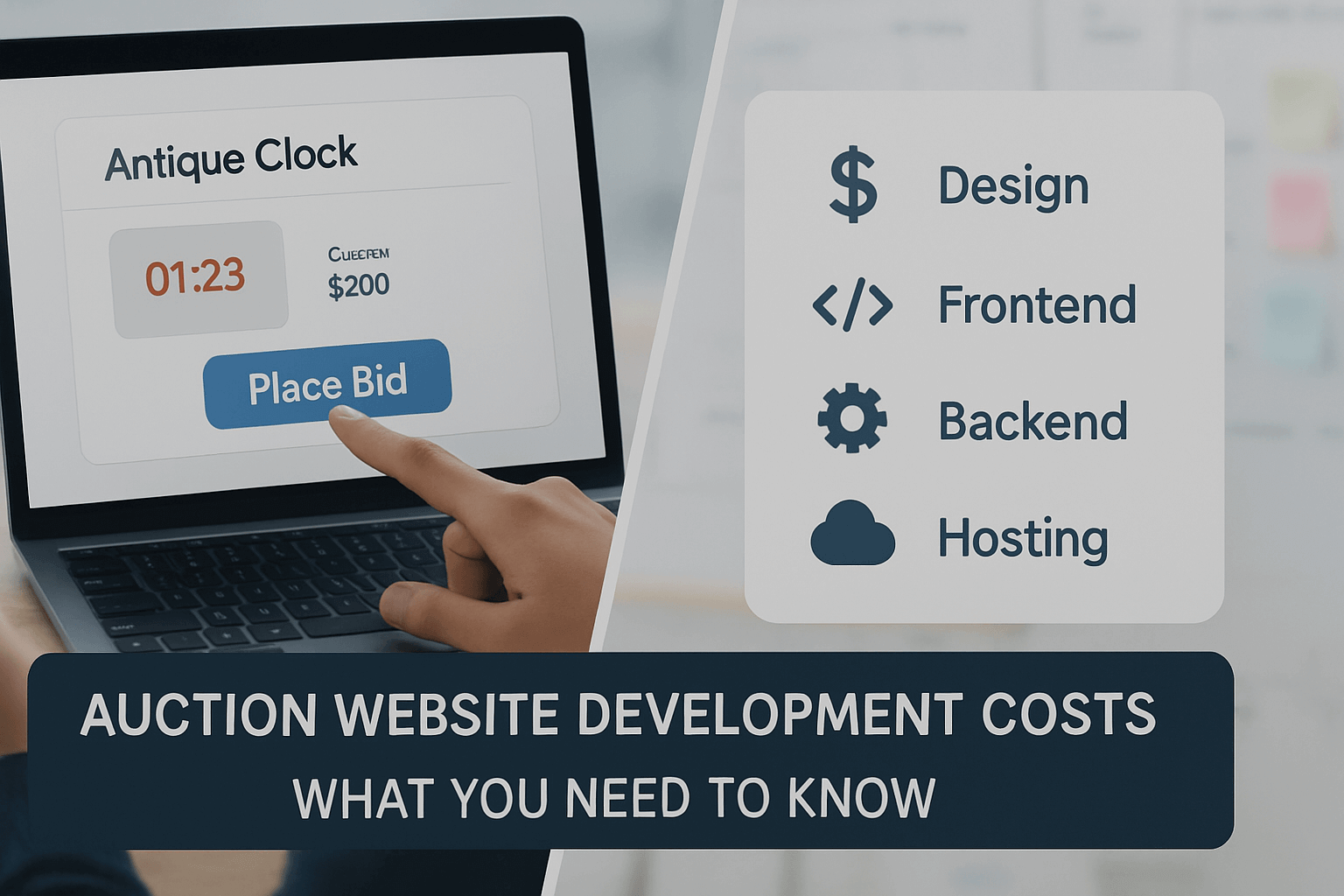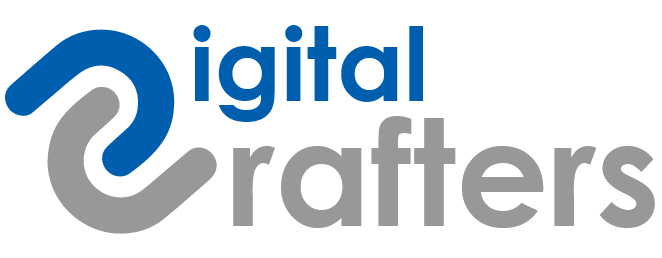
In 2024, the global online auction market surpassed $6.5 billion and is projected to grow steadily through 2030. Platforms like eBay, Copart, and niche marketplaces for collectibles, vehicles, and real estate continue to prove that auction websites are more than just a trend—they’re a profitable digital model.
But while the opportunity is clear, many entrepreneurs face a pressing question: How much does it cost to build an auction website?
The answer isn’t one-size-fits-all. Costs can range widely depending on the platform’s complexity, required features, security standards, and whether you're building from scratch or using a pre-built solution. From user registration and product listing to real-time bidding, escrow payments, and admin dashboards—each feature adds to the final cost.
In this guide, we’ll walk you through every factor that influences the cost to build an auction website. Whether you're launching a simple MVP or planning a full-featured platform, you’ll get a clear picture of what to budget and where you can optimize.
Understanding the cost to build an auction website starts with identifying the variables that directly impact your development budget. From the type of auction platform to the complexity of features and scalability needs, each choice plays a role in the final cost. Here's a detailed auction website development cost breakdown across the key areas:
Not all auction websites work the same way. The type of auction model you choose will influence both the design and technical implementation—and ultimately, the cost.
Each model requires a tailored bidding logic and interface. The more unique the auction mechanics, the higher the customization effort and cost.
A basic MVP (Minimum Viable Product) with limited features will cost significantly less than a full-featured auction platform. Here’s a quick comparison:
The custom auction website development pricing will rise with every added feature. For instance, building a real-time auction site with auto-bidding and live updates can significantly increase backend complexity and server load—adding both time and cost.
Designing a responsive and intuitive frontend matters just as much as building a robust backend. Here’s what you’re paying for:
The auction website design and development pricing varies depending on how custom the UI is and how scalable the backend needs to be. Off-the-shelf templates may reduce cost, but custom design improves brand trust and usability.
Your tech stack can have a big impact on performance, scalability, and ongoing maintenance costs. Here’s what most modern auction platforms use:
You’ll also need to factor in hosting:
Choosing the right stack ensures your platform can scale with user demand without needing costly rebuilds later.
The average cost of developing an online auction platform in 2025 depends on the scale and complexity of the project. Whether you’re building a simple MVP or a full-scale enterprise solution, your development costs will vary based on features, tech stack, development team, and scalability requirements.
| Project Type | Estimated Cost | Description |
| Basic MVP | $8,000–$15,000 | Core features like item listing, bidding, basic user accounts, and admin panel. Suitable for startups testing the market. |
| Mid-Range | $15,000–$30,000 | Includes user roles (buyers/sellers/admin), integrated payments, basic notifications, and better UI/UX. |
| Enterprise | $30,000–$100,000+ | Fully custom design and features, real-time bidding, advanced dashboards, third-party integrations, and high scalability. |
These estimates cover design, development, and testing. Ongoing maintenance, hosting, and future upgrades will add to your total investment.
When it comes to building an auction website, your choice between hiring a freelancer or working with a development agency significantly affects the cost—and the outcome.
Freelancers may be a good fit for MVPs or feature updates. However, managing multiple freelancers (e.g., for backend, frontend, and design) can complicate the process.
Agencies provide affordable auction website development services when you consider long-term value. You’re not just paying for code—you’re getting a complete product with QA, security, support, and a roadmap for scaling.
Choosing the right partner depends on your budget, timeline, and how critical quality and scalability are for your platform.
To understand where your budget goes, it’s important to break down the real-world costs involved in developing an auction platform. From design to security, each part plays a critical role in building a reliable, user-friendly, and scalable site.
Good design goes beyond looks—it directly impacts user trust and conversion rates. A clean, intuitive interface is essential for any auction platform.
Typical costs: $1,500–$5,000
Whether you're launching a consumer-facing app or a B2B platform, UX design should be a priority from day one.
This is where most of your development budget will be spent. Building stable, secure, and scalable auction logic requires solid backend engineering and a polished frontend experience.
Typical costs: $5,000–$40,000+
The cost varies based on complexity, real-time functionality, and performance requirements.
Accepting payments securely is non-negotiable. Whether using Stripe, PayPal, or a custom payment gateway, you need tight security and smooth transactions.
Typical costs: $2,000–$7,000
Your cost estimate for building an auction website with payment integration should always include compliance with data protection and payment regulations.
To enhance functionality, most auction platforms rely on third-party APIs and integrations.
Typical costs: $1,000–$5,000+ (varies based on usage and licensing fees)
These tools add convenience and trust, but also contribute to the web development cost for auction platforms—both during setup and as ongoing expenses.
Launching an auction platform doesn’t have to drain your entire startup budget. With a strategic approach and the right development roadmap, you can stay lean without compromising on quality. Here's how to start budgeting for an auction website startup the smart way.
Your MVP (Minimum Viable Product) should focus only on features that are essential for functionality and market testing. Adding too many features early on leads to delays, higher costs, and wasted resources.
Must-Have Features for MVP:
Nice-to-Have Features (For Later Phases):
By launching with a lean feature set, you get to market faster and validate your idea with real users before scaling further.
Building a platform like eBay is a major undertaking. It involves far more than just auction functionality—it requires real-time infrastructure, robust search and filtering, layered user roles, and complex payment and dispute systems. If you're wondering about the cost to create a bidding website like eBay, the answer depends on how closely you want to match its capabilities.
Replicating eBay means replicating its performance at scale. This isn’t just about features—it’s about infrastructure, speed, and stability across millions of transactions.
Here’s what drives up the price:
Cloning eBay isn't just copying a UI—it’s recreating an ecosystem. That’s why the price to build a real-time auction site with eBay-level performance and features often crosses the $150,000–$300,000+ mark for a fully built product.
Not every startup needs to launch at eBay scale. Here's what you can expect to build at different budget levels:
Good for market testing, but limited in performance and customization.
Ideal for startups aiming to launch a polished, revenue-ready product with room to grow.
Trying to build “the next eBay” overnight isn’t realistic—but with a clear roadmap and the right budget, you can launch a strong, scalable platform and evolve it as demand grows.
Even with a well-planned development budget, many auction website startups underestimate the hidden costs that come after launch. These ongoing expenses are essential to keep your platform secure, fast, and visible in a competitive market.
After launch, your site will need regular updates, bug fixes, and performance tuning. Expect to set aside 10–20% of your initial development cost annually for maintenance.
Ignoring maintenance can lead to downtime, poor user experience, and security vulnerabilities.
Security and uptime aren’t optional in e-commerce.
These essentials keep your platform online, secure, and legally compliant.
A great platform is useless without traffic. Ongoing SEO and marketing are vital to attract users and stay competitive.
Budget $500–$5,000/month depending on your growth goals and market size.
User expectations evolve quickly. To stay relevant, you’ll need to roll out new features regularly.
Set aside funds for continuous improvements based on user feedback and analytics.
Accounting for these hidden costs ensures you’re not caught off guard after launch. Planning beyond the build phase is critical to running a secure, scalable, and profitable auction platform.
According to industry reports, the average cost of launching a functional online auction platform ranges from $8,000 to over $100,000, depending on the scope, technology, and business goals. For startups and businesses wondering how much does it cost to build an auction website, the answer lies in understanding your exact needs—and planning accordingly.
Here’s a quick recap of the key cost factors:
Every project is different, and the best way to budget is with a tailored estimate based on your business goals, timeline, and technical requirements.
Need an accurate quote? Contact our web development team for a free consultation. We’ll help you map out a clear, cost-effective path to launch a high-performing auction website that scales with your growth.
The most affordable way to launch an auction site is by using open-source platforms or pre-built scripts. Solutions like WordPress with auction plugins or platforms like PHP Pro Bid can get you started for under $5,000, including basic hosting and domain costs. However, these come with limitations in performance, security, and scalability.
Yes, WordPress can be used to build a simple auction website using plugins like WooCommerce Simple Auctions or Ultimate Auction. This approach is cost-effective and works well for small projects, but it’s not ideal for real-time bidding or high-volume transactions. For anything beyond basic functionality, a custom solution is usually a better long-term investment.
Building a full-featured auction platform typically takes 3 to 6 months, depending on complexity. This includes time for planning, UI/UX design, frontend and backend development, payment integration, testing, and deployment. Projects with advanced features like real-time bidding or mobile apps may take longer.
A ready-made script is faster and cheaper to launch but offers limited flexibility and scalability. A custom build requires more time and money but gives you full control over features, design, and performance. If you're building a long-term business or need unique functionality, custom development is the better choice.
There are several ways to generate revenue from your auction site:
Choose a monetization strategy that aligns with your target audience and platform type.
